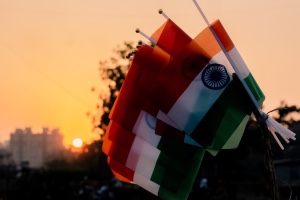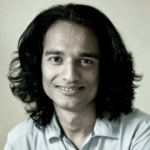
Commentary
 By Kaushal Kishore*
By Kaushal Kishore*
Gandhiji had launched the salt satyagraha in 1930 on March 12. On its anniversary, the Prime Minister has started 75 week long celebrations of the independence. This year is the seventy-fifth anniversary of the Indian independence. After the twenty-five days, marching procession reached Dandi, on April 5 in the memory of that non-violent movement of modern history. The celebrations of this Amrit Mahotsav is scheduled at seventy-five places at different parts of the country that will be completed on this occasion next year.
The PM’s decision to extend the Independence Day celebrations beyond the confines of the ramparts of the Red Fort, reminds Narendra Modi’s days as Chief Minister of Gujarat where, after taking over as the CM, he had started a new tradition by celebrating Independence Day in different parts of the state. It had turned out to be a powerful medium to deliver development to the remote areas of the state.
Can the country too benefit from repeating this policy at the national level could be debatable though. Before dwelling on the issue, it may be mentioned that on 15th August 1947, the Prime Minister Jawahar Lal Nehru addressed a public meeting at the Princess Garden near India Gate. Then the hoisting of the tricolour on the Red Fort took place on the next day. Ever since, the Prime Minister has been addressing the nation after hoisting the flag on August 15, from the ramparts of the Red Fort as a tradition, and this speech is known for its own peculiarity.
As is obvious, in the era of parliamentary politics, democratic values were adopted instead of the dictatorship of the monarchy. The heads of nation-state in certain other parts of the world have done a better job by addressing both the houses of the Parliament simultaneously. It’s possible to take better care of dignity maintained within Article 51 of the Constitution when the leaders interact with people in different areas.
Independence Day celebrations apart from the ramparts of Red Fort has also been in demands for last few years. The political analysts like Avatansh Kumar and Nitesh S. have offered remarkable suggestions keeping Indian cultures at the centre. Hampi, the place associated with Vijayanagara Empire, can remind the five hundred years old history. Apart from that Kashi, Puri, Somnath and Nalanda are other such places to celebrate the festival dedicated to the freedom struggle. On the other hand, Nitesh’s list continues from Srinagar (Kashmir) to Kanyakumari, and the places like Guwahati, Gandhinagar and Bhopal are in between.
Certain other scholars have also expressed their views in its favour. However, the Prime Minister out of national capital during the celebrations of Independence Day is a question on the federal structure since already the Chief Ministers hoist the tricolour in their respective states.
However, the important developments of 1947 needs to be kept in the mind in this context. Seventy-five years ago, Sardar Patel wrote a letter to Mahatma Gandhi inviting him to celebrate the independence in the national capital. He got the response from Noakhali (Bengal) that was burning in the fire of communal violence, ‘When Hindus and Muslims are killing each other in Calcutta (Kolkata), how can I come to celebrate. I will give my life to stop the riots.’ This bravery signifies the criterion that teaches how to face the toughest challenges. While redressing the sufferings of the last person the leadership emerges.
The nation is going through the trinity of pandemic, disaster and terrorism together. Reaching the remote region sends a better message to the common people. This policy of the Modi government is also clear from the expansion of this Amrit Mahotsav. It is possible that the future plans will be clear only during its closing ceremony next year. While taking decisions in this matter, the old cultures and modern problems of the country should be kept in mind, and also its federal structure.
*Kaushal Kishore is the author of The Holy Ganga (Rupa, 2008) and Managing Editor of Panchayat Sandesh, a monthly organ of All India Panchayat Parishad. The views expressed as personal.





